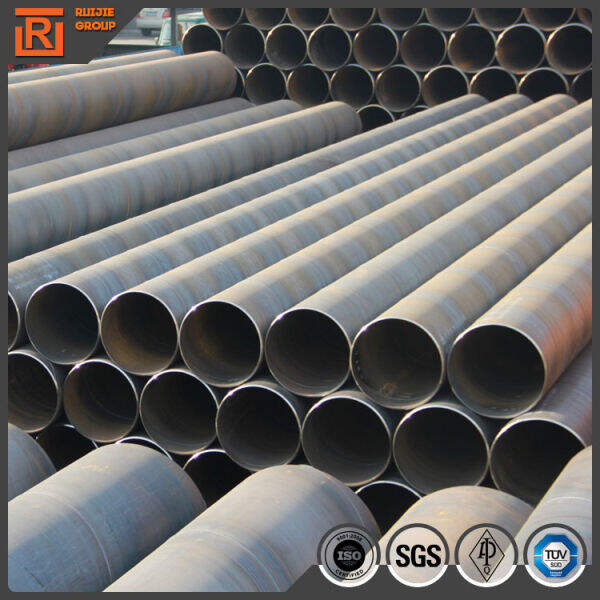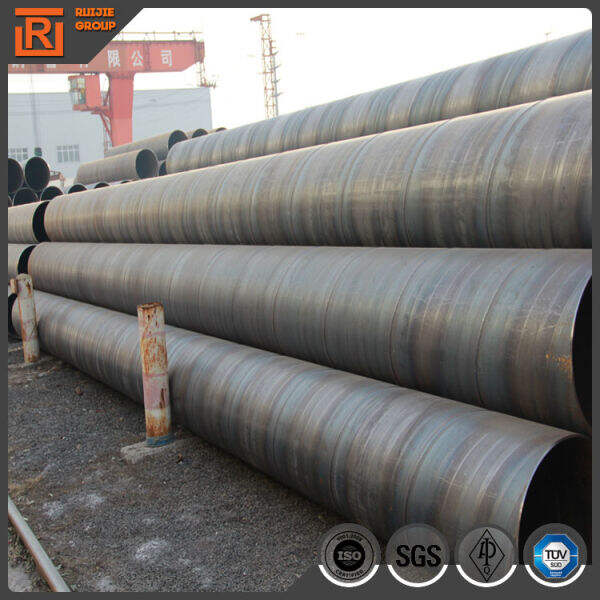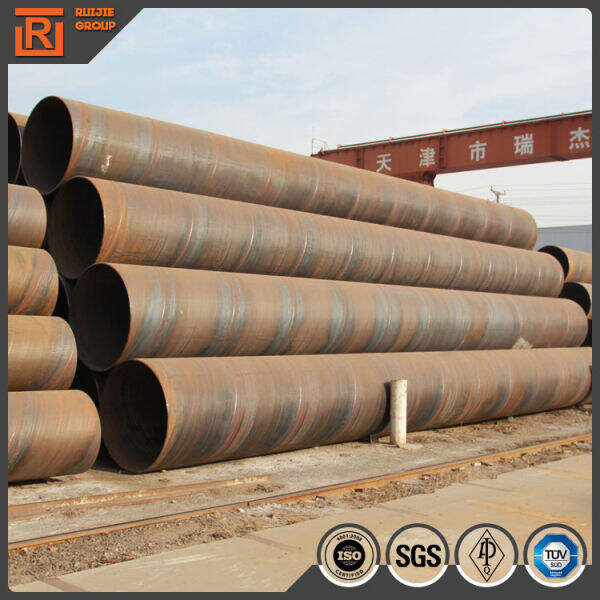Ტემპერატურები დასვლის გზაზეა, და ზამთარის ცხოვრება შემოწმდება — ნებისმიერ ადგილზე, სადაც ცხოვრობ. იდეა გაფართოების გარშემო გაყოფილ ჩამოღების მახვილში მოკლე ჩოკოლადის სანამ წმინდა გახდება შენი სამთავრო გარემოდან შემდეგ მოგვიანების გარეშე გამოიყენება. ალბათ შენ შენი გათბობის გარემოდან გამოვიდეს თბილი ჰაერი თითოეულ სართულში, მაგრამ დაგჭირდება მეტი გამოვლენა იმის შესახებ, როგორ ხდება ეს? ყველაფერი ხდება მაღალების მეშვეობით! ეს მაღალები გამოგზავნიან თბილ წყალს ან ბუხარს, რომელიც გათბობს მთლიან სახლს. ბევრი გარმავლენა მიიღება თქვენს სახლში მაღალების გამო, რადგან უფრო მეტი გარმავლენა არის თბილ წყალის გარეშე. მაგრამ თუ მაღალები არ არის მაღალი გარშემო გაყოფილი, რაც უნდა იყოს, ბევრი გარმავლენა შეძლებს გასვლა გზაზე (და შეცვლა მისი დაბრუნების). და აქ მაღალი გარშემო გაყოფილი ინსულაცია შეიძლება შენი დღეს შენახო!
Ტუბის იზოლაცია: ეს არის გარე დაფარვა, რომელსაც გარშემო გახურავთ ტუბებს, რომლებიც წყალს ან ბუხარს აღწერთ. ამ იზოლაციის ფუნქცია არის ტუბების შიგთავის ჰაერის გარმა დაცვა და არა შემოწმება ცხელი ჰაერის გამოსვლაში ცოლებში. თქვენს სახლში უფრო ცხელი მდგომარეობის მიღწევა ტუბების იზოლაციის გამო. ეს ნიშნავს, რომ თქვენ არ გჭირდებით ბევრი ენერგია თქვენს სახლის გათბობისთვის, რაც ძალიან კარგია! არა უბრალოდ ის, რომ ნაკლები ენერგიის გამოყენება უფრო კარგია ჩვენს პლანეტისთვის, რადგან ის შექმნის ნაკლები აღმოსავლეთი და უფრო sachvenebuli ეკოსისტემა!
Გარკვეული მასალებია, რომლებიც შეგიძლიათ იყენებოთ ტუბების იზოლირებისთვის. ყველაზე პოპულარი მასალები არის ფიბროგლასი, ქვების სისხლი და ფორმი. ფიბროგლასი არის ღრუბელი და მარტივი ტუბების ჩამორთვისთვის, რაც ხდის მას პოპულარ არჩევანს. წინაში, ქვების სისხლი შექმნილია ვულკანური ქვაბისგან და საკმარისად კარგად შეძლებს სიგრძეს შენარჩუნებს. პლასტიკ-ბაზირი ფორმის იზოლაცია ასევე საკმარისად ეფექტურია სიგრძის შენარჩუნებისთვის. ნებისმიერი მასალა, რომელსაც იყენებთ, დარწმუნდით, რომ ის შეფარდებულია ტემპერატურისთვის და საუკეთესოდ არის ახალგაზრდად საჭიროდ მართვის ახლოს.

Მას თუმცა რომ ჩანს, რომ გართიკის იზოლაციის მონტაჟი რთულია, ის უნდა გახდეს შესაბამის ეტაპებით მაქსიმალური ეფექტის მისაღებად. ჯერ უნდა მზად არის გართიკები, რომლებიც უნდა იყოს წმინდა და გამრევი. თუ ისინი ღრუბელიანებიანებიან ან გამოსულია, იზოლაცია არ დაჭერდება სწორად. იზოლაცია გართიკის გარშემო ან ორ გართიკის შორის გადაიწყვება, ამიტომ გართიკების მზად არსა უნდა იყოს წინასწარ. ეს გვეხმარება ამის დარწმუნებით, რომ არ დარჩება არანაირი გამოსვლის ადგილი სიგრძესთან ერთად, რომელიც არ გამოგვიყენება გათბობის გარეშე. გართიკების გარშემო გადაწყვების შემდეგ, იზოლაციას უნდა დაჭეროთ ტაპით ან ქალამით. ბოლოს, დარწმუნდით, რომ ყველა ბურთი და ტყილი დახურულია; ზოგჯერ ნაკლები სივრცეები კარგად შეიძლება გამოსვლის ადგილი გახდეს.

Ასე რომ, გარკვეული იზოლაციის არჩევანი თქვენს ტუბის შემთხვევაში, აქ არის რამდენიმე ფაქტორი, რომელიც უნდა განიხილეთ. ჯერ ყველაფერი განიხილეთ ტუბების ჰელმი. თუ ტუბები ძალიან ცხელი ხდება, უნდა აირჩიოთ მასალა, რომელიც აღიწერის მაღალი ტემპერატურების გამო არ გადაჭრის ან არ დაზიანდება. გვჭირდება შიგთავის იზოლაცია? თუ არასწორედ იზოლირებთ, ცხელება განაგრძება გამოსვლას, რაც არასამართლედ არის იზოლაციის მიზნის წინააღმდეგი. ბოლოს, უნდა მიუთითეთ იზოლაციის მასალის თვისებებზე. მაგალითად, ზოგიერთი მასალა არ არის ისეთი მარტივი გაჭრივად და ფორმირებისთვის, რაც შეიძლება განაპირობოს ინსტალირების რთულებებს.

Გარმავლენის ტუბების იზოლირება დაგეხმარებათ ენერგიის შენახვაში რამდენიმე გზით. როცა თქვენი ტუბები სწორად იზოლირებულია, თქვენ შენახავთ ენერგიას სასახლელი გათბობის დროს. ეს მიიღება საკმარისად დაბალი ენერგიის ანგარიშები – და ეს ყოველთვის დადებითი რამეა! მეორე მიზეზია, რომ ნაკლები ენერგიის გამოყენებით, თქვენ ასევე ნაკლებად გადაადგილებთ გარემოს დაბრუნებას. ბოლოს, ტუბების იზოლირებით თქვენ არანაირად გაფართოებთ თქვენი გათბობის სისტემის ცხოვრებას. თქვენი HVAC სისტემის იზოლირება გაფართოებს მის ცხოვრებას და აძლევს მას შესაბამისად ჩა-გართიმების პოტენციას, რაც ასევე დაგეხმარება მასალებში მოქმედი სტრესების გამოსახატვაში.